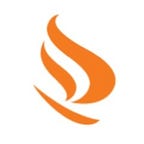Digital Literacy in New York’s Asian American Community
By Juo-Hsi (Sylvia) Peng
Last December, the Asian American Federation (AAF) where I am a Community Navigator, partnered with Sapna NYC, a nonprofit serving South Asian new immigrants. Together, we decided to hold a six-week virtual digital literacy class with a cohort of around 20 students. Almost every class ran over because the students had many questions both out of their enthusiasm, and the need to clarify what had been taught. Despite audio problems and children making noise in the background, the students enjoyed the class so much that Sapna held another six-week program. We saw this successful class as a huge leap forward from our experiences just a few months earlier.
But when COVID-19 hit and our operation went virtual overnight, there was a sudden drop in engagement from our immigrant clients. AAF partners with Asian American-serving community-based organizations (CBOs) across the five boroughs of New York City worked together to bridge resource gaps experienced by the pan-Asian low-income immigrants through a series of community engagement events. But with the pandemic raging, we found ourselves staring at empty Zoom rooms. In a time where our immigrant community was experiencing rampant job loss, and were bewildered by misinformation, we had become disconnected from the community we serve.
The solution was not simple. While the digital divide looked different for each Asian community, the lack of digital skills and literacy was a common issue faced by all. In order to meet where people were, we had to break down the virtual outreach process and evaluate potential barriers at every level. We experimented with various platforms to find the most effective way to communicate with the immigrant community. We found that text messages work well and Google forms are manageable if everything is translated. Above all the minor adjustments, more extensive case management from the CBO had the greatest impact in eliminating some of the digital barriers, but it also tripled the workload of CBOs.
New York City actually provides an array of digital literacy resources for low-income communities. While foreign-born Americans are more than two times more likely to lack digital literacy compared to native-born Americans, most existing public resources are not language-accessible, especially for Asian immigrants. They expect immigrants to first gain English competency before learning any digital skills. Moreover, the curriculums are not created by people with experience teaching foreign born immigrants. Living in an era when finding a job posting requires computer skills, Asian immigrants are left out from obtaining sustainable and fulfilling employment.
Asian immigrants were one of the hardest-hit groups by the pandemic-induced financial crisis. According to a 2020 Asian American Federation report, Asian Americans had the highest unemployment rate in any U.S. racial group during the pandemic.
Along with job loss our communities also saw high food and housing insecurity as well as a higher risk of mental health issues. The pandemic’s direct impact on the low-wage service industry once again showed us how the jobs that were available to immigrants were volatile and precarious. Without language-accessible and culturally competent digital literacy and workforce development programs, the current social services landscape does not provide them with many opportunities to escape an uncertain future.
Though the solution to the digital divide is not simple, it is not impossible. Virtual programming leaves out a pocket of the immigrant population — those without stable internet, access to digital devices, or knowledge to turn on computers. We were able to narrow the gap within Sapna’s community because Sapna began its digital literacy courses back in 2019. After a unanimous request for computer classes by the South Asian women they served, the Sapna staff reserved the Bronx Parkchester Public Library computer lab and taught five cohorts of women how to turn on computers and set up their first email accounts. These initial seeds planted in this community allowed us to hold the virtual digital literacy course at the peak of COVID-19. However, a sad fact that can’t be ignored is that Sapna’s digital literacy efforts were not and are still not fully funded.
Building digital literacy in the Asian community requires expanding broadband internet and increasing access to digital devices. It also requires a long-term investment in Asian-led, community-trusted initiatives so that they are able to build out effective and language-accessible curriculums that meet their community where they are at. As the city rebuilds to be more tech-savvy, we must not leave the Asian immigrants stranded. Instead, we should be striving for a future where technology enhances the possibility for new immigrants to thrive.
Juo-Hsi (Sylvia) Peng is a Community Navigator at the Asian American Federation.
Bridging the digital divide for the AAPI community: The FCC launched the Emergency Broadband Benefit to provide a monthly discount to offset the cost of broadband internet subscriptions. Click on here for more information.
